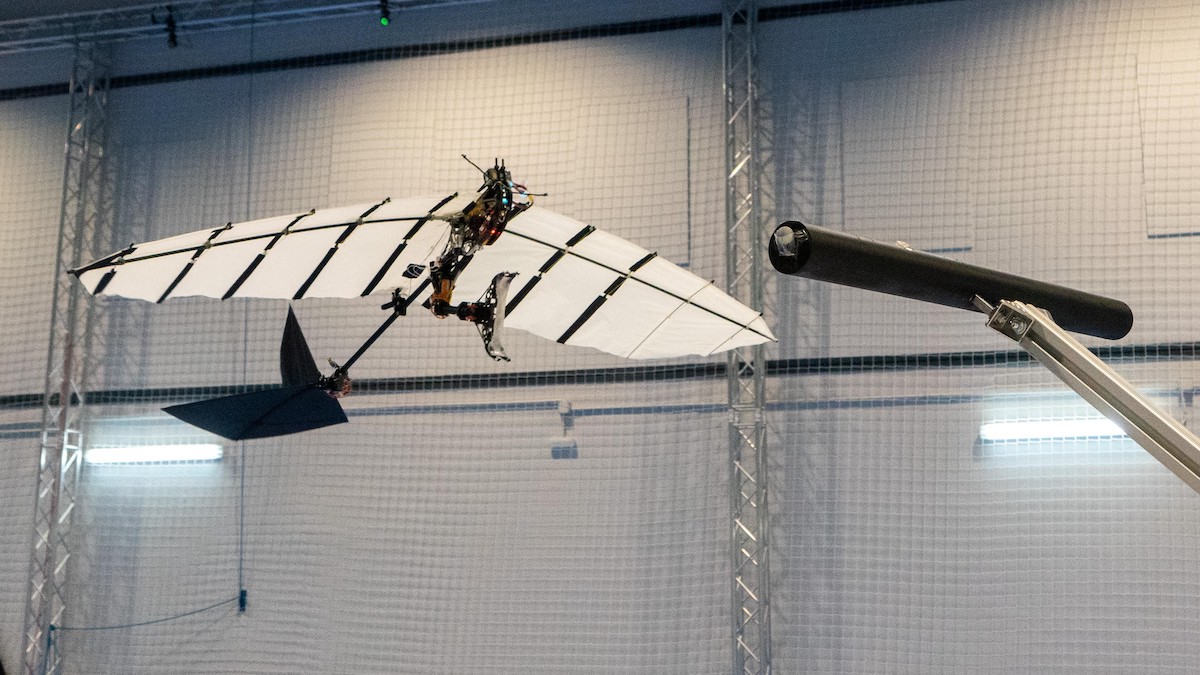Tokyo (SCCIJ) – Swiss researchers are at the forefront of new frontiers in robotics: This time with an ornithopter, a flapping-wing aircraft, that can autonomously land on a tree branch. The innovation significantly expands the scope of robot-assisted tasks.

A winged aircraft robot developed by a Swiss researcher can land autonomously with a leg-claw appendage (© EFPL).
Complex move
A bird landing on a branch makes the maneuver look like the easiest thing in the world, but the task involves a delicate balance of timing, high-impact forces, speed, and precision. It’s a move so complex that no flapping-wing robot (ornithopter) has been able to master it, until now.
The robot weighing just 700 grams carries an onboard computer, navigation system, and finely calibrated leg-claw appendage. This allows it to detect, slow down for, and firmly grasp the perch without expending any energy.
The ornithopter had to be able to slow down significantly as it perched, while still maintaining flight. The claw needed to be strong enough to grasp the perch and support the weight of the robot, without being so heavy that it could not be held aloft. Finally, the robot needed to be able to perceive its environment and the perch in front of it in relation to its position, speed, and trajectory.
First phase
The breakthrough marks a major step forward for flapping-wing robots, which can now do more than just free flight. Postdoctoral fellow Raphael Zufferey at the Swiss Federal Institute of Technology in Lausanne (EPFL) built and tested the ornithopter with the birdlike claw together with some European scientists at the University of Seville, Spain as part of the European project GRIFFIN.
“This is the first phase of a larger project. Once an ornithopter can master landing autonomously on a tree branch, then it has the potential to carry out specific tasks, such as unobtrusively collecting biological samples or measurements from a tree. Eventually, it could even land on artificial structures, which could open up further areas of application,” Zufferey says.
Birdlike claw
The researchers achieved all this by equipping the ornithopter with a full onboard computer and navigation system, which was complemented by an external motion-capture system to help it determine its position. The claw itself was designed to absorb the robot’s forward momentum upon impact and to close quickly and firmly to support its weight. Once perched, the robot remains on the perch without energy expenditure.
Looking ahead, Zufferey is already thinking about how their device could be expanded and improved, especially in an outdoor setting. “At the moment, the flight experiments are carried out indoors, because we need to have a controlled flight zone with precise localization from the motion capture system. In the future, we would like to increase the robot’s autonomy to perform perching and manipulation tasks outdoors in a more unpredictable environment.”
Text: EPFL (Editing by SCCIJ)





























